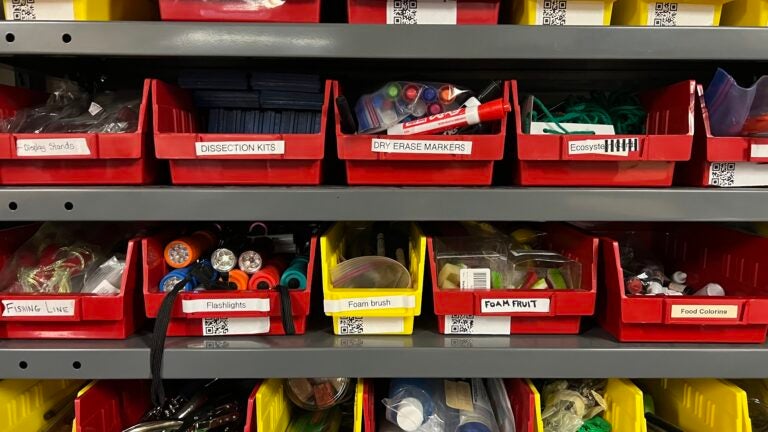
Better Together: How JEP’s STEM Supply Library Supports Service-Learning
Behind a colorful shelving system in the JEP office lies a wealth of educational possibilities. This semester, JEP’s STEM Education Programs turned their supply closet into a community resource, making everything from basic craft supplies to sophisticated scientific equipment available to service-learning volunteers across programs. The result? More engaging, hands-on learning experiences for our K-12 students without additional costs for JEP participants.
“I have always operated under an ethos of sharing the STEM Program’s supplies,” explains Jessica Stellmann, Assistant Director of JEP’s STEM Education Programs. “It had been occurring to me over recent semesters that we have a large collection of key scientific equipment that does nothing but sit and take up space in the office for all but a couple of weeks out of the year.”
The impact has been immediate. Geology Program Assistant Emerson Damiano notes that her students are “super excited” about these new resources because they are no longer limited by what they can easily purchase. “Sand sample slides or microscopes are something they could not easily get themselves,” she explains. For more common supplies like Play-Doh or crayons, the library alleviates the financial burden on student volunteers.
The sharing extends beyond physical supplies. STEM Education Programs has also opened access to their extensive library of interactive, hands-on lesson plans and their YouTube channel featuring helpful videos and experiment ideas. All resources are organized in a shared Google Drive that JEP Program Assistants and their volunteers can easily navigate.
Sara Eyassu, Ecobright Program Assistant, has seen multiple teams utilize the supply library for lessons about volcanoes and other earth science topics. Where students once might have simply shown pictures of volcanic eruptions, they can now create bubbling, fizzing models using baking soda, vinegar, and clay from the supply library. Human Biology Program Assistant Itzel Whyte-Aguayo similarly reports widespread use among her volunteers.
The available materials range from consumable items like craft supplies (which don’t need to be returned) to more specialized equipment like anatomical models, microscopes, and geology kits (which can be borrowed for up to two weeks.) The new system simply formalizes the inventory information “that already lived in my head,” as Stellmann puts it, with a straightforward sign-out process.
This resource-sharing initiative exemplifies JEP’s collaborative spirit, ensuring that expensive equipment and educational materials benefit more service-learning programs. By pooling resources, JEP volunteers can now offer richer, more engaging lessons to our community schools without duplicating costs or leaving valuable teaching tools sitting unused on shelves.